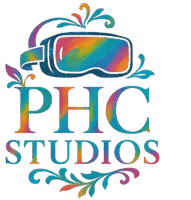How VR Can Help Kids with Dyslexia
Virtual Reality can help kids with dyslexia by making reading and language learning more interactive, multi-sensory, and less stressful. While VR doesn’t “cure” dyslexia, it can improve reading fluency, comprehension, and confidence by using engaging, immersive experiences.
⸻
1. Multi-Sensory Learning
• VR can combine visuals, sounds, and movement so kids learn through multiple senses at once.
• Example: In a VR forest, a child sees the letter “B,” hears its sound /b/, and watches an animation of a “banana” appearing.
2. Phonics & Letter Recognition
• VR can gamify phonics lessons — kids can “catch” floating letters, match them to sounds, and build words.
• Helps strengthen the link between letters and sounds in a fun, low-pressure setting.
3. Reading Comprehension
• Instead of reading words on a flat page, kids can step into a story in VR, interact with characters, and watch scenes unfold, which helps connect meaning to text.
4. Confidence Building
• VR offers a private, judgment-free environment where kids can practice reading without fear of embarrassment.
• Encouragement, rewards, and fun elements keep them motivated.
5. Attention & Focus
• Immersive VR experiences block out distractions, helping kids stay focused on reading tasks longer.
6. Eye Tracking & Visual Processing
• Some VR systems can help train visual tracking skills by guiding the eyes smoothly from left to right, improving reading flow.
⸻
Example VR Dyslexia Activities
• Letter-Sound Adventure: Explore a VR island where each treasure chest contains a letter or sound puzzle.
• Interactive Story Worlds: Read and act out scenes with VR characters.
• Phonics Quest Games: Collect items by matching correct sounds to words.
• Sight Word Challenges: Find and “grab” words in a VR space to form sentences.

